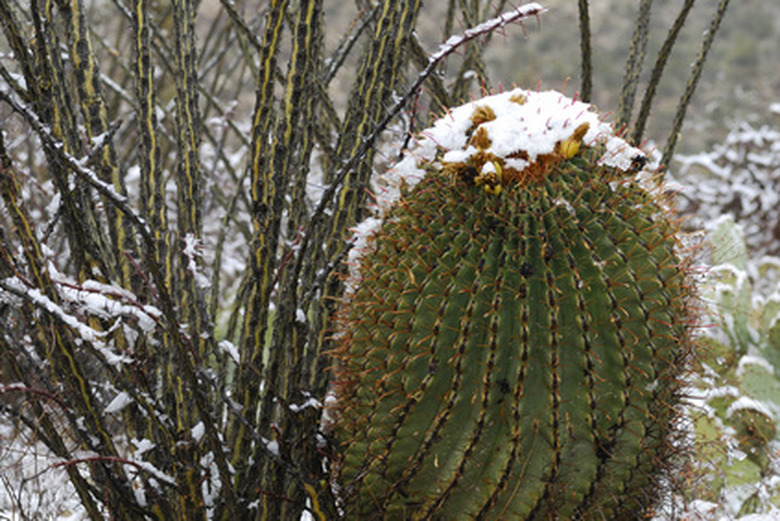Arizona Plant Identification
Arizona has more unusual native plants than any other state, says the Arizona Department of Agriculture. Landscaping plants, including annuals, perennials, palms, fruit trees, evergreens and deciduous shrubs and trees, are grown in this southwestern state. However, only a few plants can grow well over the entire state because of different growing conditions, notes the University of Arizona. That's why it's important Arizona gardeners be familiar with their area's climate and how it influences plant growth.
Size
Arizona, along with New Mexico, has the largest diversity of vascular plants in the United States. According to the Northern Arizona University website, Arizona has roughly 3,370 flowering plants and ferns. Roughly 5 percent of Arizona's plant species are endemic, meaning these plants are native or restricted to a particular area.
- Arizona has more unusual native plants than any other state, says the Arizona Department of Agriculture.
- Roughly 5 percent of Arizona's plant species are endemic, meaning these plants are native or restricted to a particular area.
Geography
Arizona is divided, geographically, into four different growing regions which correspond to the state's four climatic zones. Low desert regions have elevations below 1,000 feet and have a low annual precipitation of less than 4 inches, notes the University of Arizona Cooperative Extension website. Intermediate elevation regions are mostly in Maricopa, Pinal, Gila, Pima and La Paz counties. The high desert area has about 3,300- to 4,500-foot elevations and more rainfall. The state's northern counties have the highest elevations and coldest winter temperatures. These areas have a growing season of roughly 150 days annually.
Types
The Mexican fan palm, which is a thin tree that originates from the lower Sonoran Desert, is the tallest palm found in Arizona landscaping. The slipper plant is a unique looking succulent with "slipper" flowers. The ocotillos is a thorny desert shrub that actually is not a cactus. It produces leaves within only days after a summer rain and then sheds its leaves when drought occurs, notes the University of Arizona. The whitethorn acacia, a small tree used in dry-climate landscaping, has an attractive yellow color and prickly spines. The barrel cactus is commonly found in Tuscan and in the eastern part of the state.
- Arizona is divided, geographically, into four different growing regions which correspond to the state's four climatic zones.
- The barrel cactus is commonly found in Tuscan and in the eastern part of the state.
Considerations
The height and width of Arizona plants are major considerations for how large plants will develop when they're full grown. Failing to calculate a plant's mature size can cause severe future problems. Shapes and forms of Arizona plants can differ as they can be round, oval, creeping, columnar or other shapes. Other considerations when choosing plants include moisture tolerance, soil type and drought and disease tolerance, notes the Creative Environments website.
Warning
There are several plants grown in Arizona that are dangerous to eat or even touch, says the University of Arizona College Of Pharmacy. Other plants can cause sickness or bad reactions. All parts of the foxglove are toxic.This plant has tubular flowers that are shaped as fingers on a glove. The foxglove comes in pastel colors of yellow, purple or white. Gray-green, hairy leaves grow at the plant's base in clumps. Other plants considered to be the most toxic include the castor bean, oleander, mistletoe and the Mexican Bird of Paradise.
- The height and width of Arizona plants are major considerations for how large plants will develop when they're full grown.
- Failing to calculate a plant's mature size can cause severe future problems.
